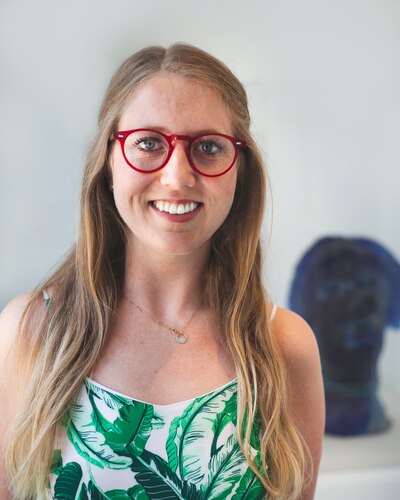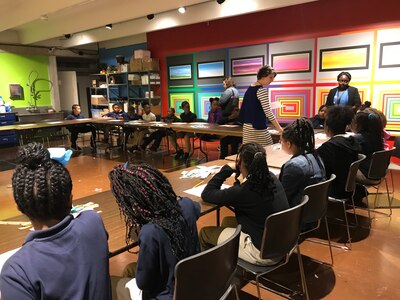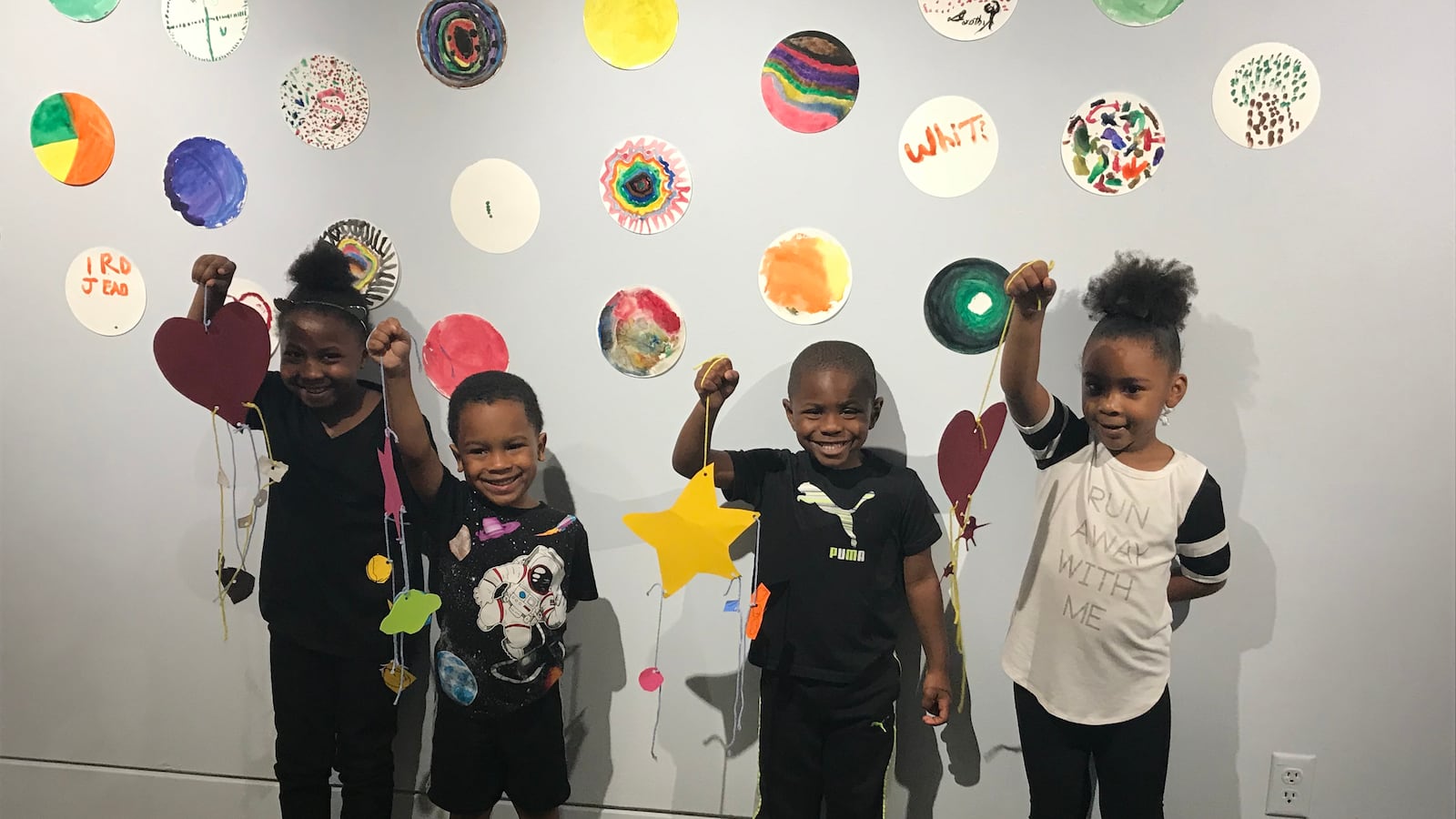Kate Renner’s classroom is a majestic building in the middle of a Memphis’ Overton Park. It has marbled hallways and art hanging from every wall.
It’s the Memphis Brooks Museum of Art, and Renner is the resident art educator. She takes hundreds of Memphis students, from preschoolers to high schoolers, on tours throughout the year — teaching as she goes. “I like being a museum educator because I’m not tied to working with a specific subject or age or schedule,” said Renner, who has worked at Memphis Brooks for the past three years.“I get to focus all my attention on personal connections without the burden of testing and paperwork.”
Renner was recently named the Tennessee Art Education Association’s Museum Educator of the Year. She spoke with Chalkbeat about the differences between classroom teaching and museum teaching, how she gets to know students in a short amount of time, and what she does to instill a love for museums in Memphis students.
This interview has been lightly edited for clarity and length.
Was there a moment when you decided to become a teacher?
Short answer: No! It fell into place. I earned a degree in art history with an emphasis in museum studies. I was never inclined to become a classroom teacher. I massively respect what school teachers go through on a daily basis — they’re kind of my heroes. I like being a museum educator because I’m not tied to working with a specific subject or age or schedule. I get to focus all my attention on personal connections without the burden of testing and paperwork.
How do you get to know your students?
Validating different points of view and backgrounds is really important from the start. Just letting each person know that whatever perspective they bring to the conversation is as important to me as the person’s sitting next to them. If they really feel confident that I’m here to listen, it’s amazing how quickly it fast-tracks their ability to open up, which is really important because a typical school visit lasts 90 minutes at most.
Tell us about a favorite lesson to teach. Where did the idea come from?

My favorite lesson to teach is the elements of art. It breaks down art into its smallest parts, making it approachable for anyone. So many people carry around a belief that “they aren’t good at art because they can’t draw a person,” but anybody can work with line and shape and color! It’s so fun to watch a person who “can’t make art” make a work of art.
What object would you be helpless without during the day?
Coffee. Boring, but true.
What’s something happening in the community that affects what goes on inside your class?
We constantly strive to be in step with classroom learning trends. A good example of that is science, technology, engineering, arts, and math, or STEAM, which has become so mainstream over the past few years. It leans heavily on 21st-century skills that help people gain proficiency in collaboration, questioning, problem-solving, and critical thinking. Last fall we focused on STEAM curriculum in our Homeschool program and this year we’ve added a STEAM tour which ties the museum’s collection of artwork with science, tech, engineering, and math.
We’ve also made 21st-century skills a priority. Brooks has the only hands-on, interactive gallery in Tennessee that’s dedicated to visual literacy – the ability to make meaning from the images you see. It’s called “Inside Art” and each activity in the gallery connects a 21st-century skill with an art skill that we hope will help visitors become confident museum explorers. We identify these skills as imagination, creativity, communication, observation, connections, collaboration, opinion, curiosity, and reflection. Inside Art is open anytime the museum is open, which is really cool.
Tell us about a memorable time — good or bad — when contact with a student’s family changed your perspective or approach.
Every year the museum hosts the Mid-South division of the national Scholastic Art & Writing Awards competition. It invites students in grades 7-12 to submit their artwork to be judged by a panel of artists and community leaders. Winners receive national recognition, cash prizes, and have their artwork hung in the museum, but the most incredible stories come from seniors who win college scholarships. Every year, the program concludes with a big awards ceremony. Last year after the ceremony was over and everyone had left the auditorium I noticed a senior student and her family were still standing down in front. She was bawling, so I went to check on them. Her dad told me she couldn’t stop crying because she didn’t think she would be able to attend college in the fall, but because of the scholarship she’d won, she would get the chance for a higher education doing something she loves. Such a memorable moment.
What part of your job is most difficult?
The museum environment comes with a unique set of challenges. I get 90 minutes to spark a meaningful connection, teach an art lesson, and give students a tour of the galleries. A large majority of school students I work with have never been to an art museum — or any museum at all. Every one of the 90 minutes I’m with them is either building up the belief that this place called a “museum” is a place for them. It’s a place they can feel confident bringing friends and family. It’s a place where they can visit when they’re happy or sad, a place where they can feel at home.

What was your biggest misconception that you initially brought to teaching?
That I would be limited to teaching art! I’ve been shocked, in the best way, about the range of topics I get to work with using art as the vehicle. In our standard school tour list, not including the special exhibitions we change out every few months, we address topics like the environment, storytelling and writing, the arts of global Africa, STEAM, characteristics of urban versus rural communities, and promoting social change. Each of these topics comes with a million unique opportunities for discussion and activities. It’s endless content to unpack. I also thought that I would enjoy working with elementary grades, but it turns out I like the littles. Toddlers and pre-K are great because they’re just happy about everything! They force you to break down concepts into their most simple parts and thinking from that perspective actually informs the way I communicate with other age groups, too.
What are you reading for enjoyment?
“Circe” by Madeline Miller
What’s the best advice you’ve received about teaching?
Realize that a lesson plan is just that — a plan. It’s important to have structured goals for the visit, but the coolest and most memorable conversations happen when we abandon the plan and let the kids lead.


